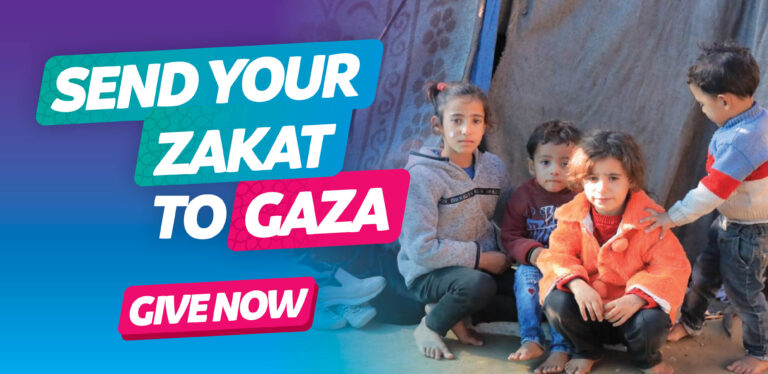Eid Salah (prayer) is a beautiful act of worship that Muslims perform twice a year on Eid al-Fitr and Eid al-Adha. Although not obligatory, it is a highly recommended sunnah that we should all try to follow. Here’s a comprehensive guide to help you understand how to perform the Eid prayer correctly and reap its blessings.
What is Eid Salah?
Eid salah is a special prayer performed by Muslims in congregation on the morning of Eid al-Fitr and Eid al-Adha. It is a significant aspect of celebrating Eid, bringing the community together for collective worship. The prayer is slightly different from regular daily prayers, with additional takbirs (Allahu Akbar) making it unique.
Is Eid Salah Obligatory?
Eid salah is not considered fardh (obligatory) but is a confirmed sunnah (Sunnah Mu’akkadah). It holds great reward and is strongly encouraged for all eligible Muslims to attend. The Prophet SAW emphasized the importance of attending Eid salah, even encouraging women, children, and those who were not fasting to join.
How to Perform Eid Salah
The structure of the Eid prayer differs slightly depending on the school of thought you follow, but the general procedure is as follows:
Before the Prayer
Prepare Yourself – It’s sunnah to take a bath (ghusl) before going for Eid salah. Wear your best clothes, apply perfume, and head to the prayer early.
Recite the Takbir – On your way to the Eid prayer, recite the Eid takbir aloud, especially for Eid al-Adha:
Allahu Akbar, Allahu Akbar, La ilaha illallah, Allahu Akbar, Allahu Akbar wa lillahil-hamd.
Translation: “Allah is the Greatest, Allah is the Greatest. There is no deity but Allah. Allah is the Greatest, Allah is the Greatest, and all praise is for Allah.”
The Prayer
The Eid salah consists of two rak’ahs (units of prayer), but it is unique due to the additional takbirs performed.
1. Niyyah (Intention): Start by making your niyyah (intention) for Eid prayer, intending to perform two rak’ahs of Eid salah for the sake of Allah.
2. First Rak’ah:
-Begin with Takbir: Raise your hands and say “Allahu Akbar,” marking the start of the prayer.
– Then, you will say six more takbirs in the Hanafi school or additional takbirs in other schools. With each takbir, raise your hands to your ears or shoulders, then place them back to your sides.
– After the takbirs, recite Surah al-Fatiha followed by another surah (usually Surah Al-A’la or Surah Al-Kafirun).
3. Second Rak’ah:
– After standing up for the second rak’ah, say five additional takbirs before continuing.
– As with the first rak’ah, recite Surah al-Fatiha and another surah (commonly Surah Al-Ghashiyah or Surah Al-Ikhlas).
– Complete the prayer with ruku’ (bowing) and sujood (prostration) as in a regular prayer, ending with the final Tashahhud and salams.
Khutbah (Sermon)
After the Eid prayer, the Imam will deliver a khutbah (sermon). It is sunnah to listen to the khutbah attentively, as it often emphasizes the significance of Eid, the acts of worship associated with the day, and community values.
Key Differences Between Eid Salah and Regular Salah
The key distinguishing features of Eid salah compared to daily prayers are the additional takbirs and the khutbah being delivered after the prayer, rather than before (as in Jummah prayer). Here’s a brief summary:
– Additional Takbirs: The Eid prayer has extra takbirs: six in the first rak’ah (besides the initial takbir to start the prayer) and five in the second rak’ah before the recitation.
– Order of Khutbah: Unlike the Friday prayer where the khutbah is delivered before salah, in Eid salah, the khutbah is delivered after the prayer.
Sunnah Acts on Eid
Aside from performing Eid salah, there are several sunnah acts that the Prophet SAW practiced on Eid:
1. Ghusl (Ritual Bath): Taking a bath before going to the Eid prayer is sunnah.
2. Wearing your Best Clothes: It’s recommended to wear clean and nice clothes, ideally new if possible, in honor of the festive occasion.
3. Eating Before Eid Salah: On Eid al-Fitr, it’s sunnah to eat something sweet (such as dates) before leaving for the prayer. On Eid al-Adha, it’s recommended to eat after the prayer, usually from the meat of the sacrificial animal.
4. Walking to the Prayer Ground: If feasible, walking to the place of Eid prayer is encouraged.
5. Takbir Recitation: It’s sunnah to recite the takbir starting from the night before Eid and continuing until the prayer.
Importance of Community and Charity on Eid
Eid is a time for unity and community bonding. The collective prayer strengthens the bonds of brotherhood and sisterhood among Muslims. It is also an occasion to reflect on our spiritual and moral growth.
Additionally, on Eid al-Fitr, Muslims are required to give Zakat al-Fitr, a charity given before the Eid prayer to purify fasting from any shortcomings and to help those in need celebrate Eid. On Eid al-Adha, the act of sacrifice (Qurbani) symbolizes our willingness to follow Prophet Ibrahim’s example, sharing the meat with the poor.
Conclusion
The Eid prayer is a symbol of gratitude, unity, and submission to Allah SWT. Performing this prayer allows Muslims to come together in worship, share in the celebration, and express their devotion to Allah SWT. By following the sunnah acts on Eid, such as giving charity, dressing well, and reciting takbir, we not only enhance the spiritual significance of the day but also strengthen the ties of brotherhood and compassion within the community.








 AUD
AUD
 GBP
GBP
 EUR
EUR
 CAD
CAD
 SGD
SGD
 MYR
MYR


